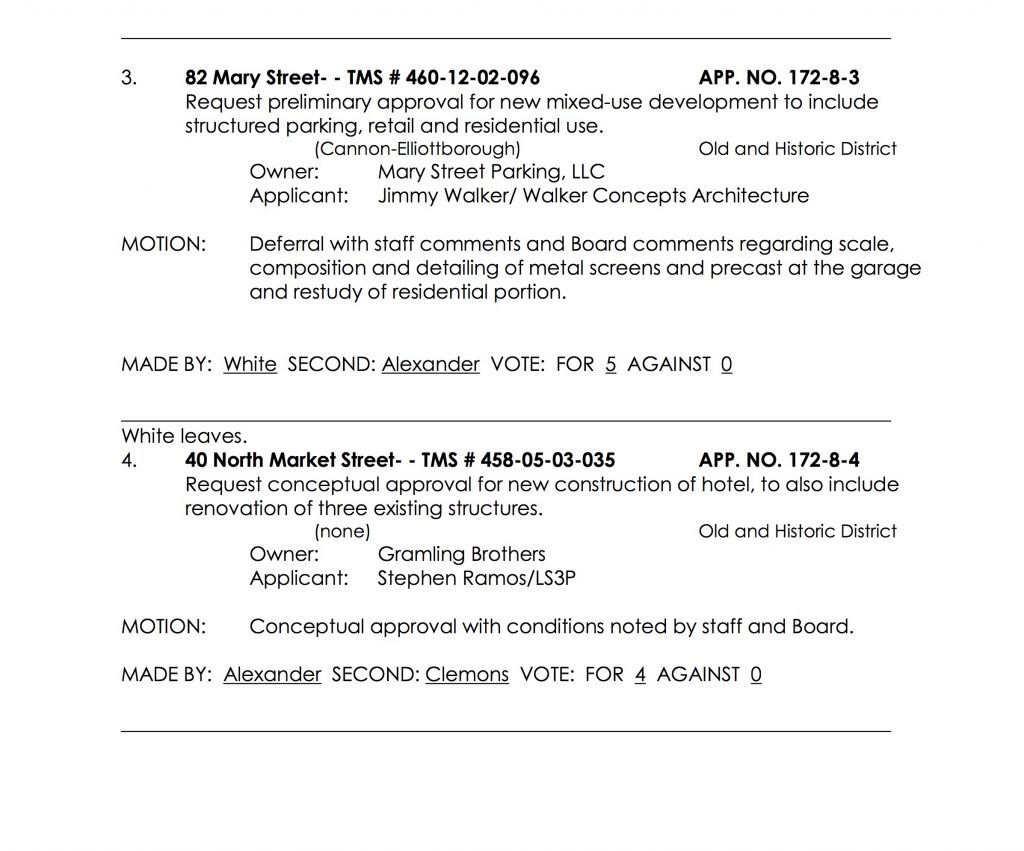The very mention of the Board of Architectural Review (BAR) for Downtown Charleston strikes fear in the heart of many. But it shouldn’t! Their mission is to preserve the character of this beautiful City we call home and they have been doing so since 1931, though their scope has increased over the years. Currently, they have jurisdiction over any new construction, demolitions, hardscaping, alterations and exterior renovations visible from the public right of way, anywhere south of Line Street. North of Line Street they review demolition requests for properties older than 50 years old and large construction projects.
There are three groups who review:
- Staff – This is who you go to do something simple like a paint color change, wood rot repair, etc…
- BAR – Small – They review projects under 10,000 square feet.
- BAR – Large – They review projects over 10,000 square feet.
The BAR meets every two weeks at 2 George Street. Staff can review anything during business hours. Larger projects should expect at least 6 months of approval time, since they have to go through multiple phases. For the smaller projects, if you do it right the first time, you may get final approval after one meeting.
Here are a few fun tips about what is allowed and what is not that I’ve learned over the years!
- In order to get approval for demolition, you have to demonstrate that less than 10% of the historic fabric is still intact. There have been special circumstances where they allowed demolition because the structural integrity of a house was beyond repair and a danger to the neighbors.
- Contrary to popular belief, there is NOT an approved list of colors. Owners can use any color on their home they wish, as long as it is in keeping with the neighborhood context.
- NO fake materials allowed on historic homes. For example, you are not allowed to use vinyl replacement windows – ever. On new construction, there is a little more leeway. On a new project I was a part of, we used Andersen Series A windows, constructed of wood, but coated with fiberglass and a composite material.
- When creating a new addition on an historic home, it must be clear where the old and new meet, so the integrity of the original historic structure is notable.
- If you make renovations or improvement to the exterior of your property without the BAR approval, they can request you undo it if it does not meet current standards.
- While you may see plenty of homes where the Piazza has been enclosed to make space for a bathroom or laundry area, you are no longer allowed to do that unless it is in the most extreme of circumstances (don’t even bother trying).
- When repairing or replacing a roof, repair is always preferred, and if you must replace it, it must be with like kind materials. If you ever consider replacing your metal roof on an historic home, I think you’ll find repair preferable given the enormous expense of the metal roof the BAR has approved for historic structure.
Here’s a link to everything you need to know about the BAR, along with a discussion of the process, applications, submittal requirements and more. I highly recommend you attend a BAR meeting before you attempt your own project! They will post a public agenda prior to a meeting, as well as a lengthy powerpoint presentation (sometimes up to 300 pages!) with images, and detailed plans.
And here’s a little example of a BAR-L Agenda and the results.

BAR-L Agenda and Results


